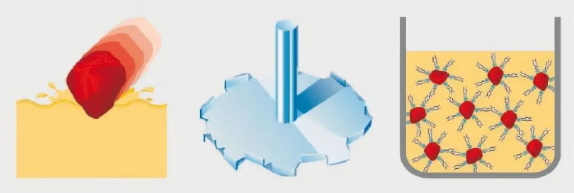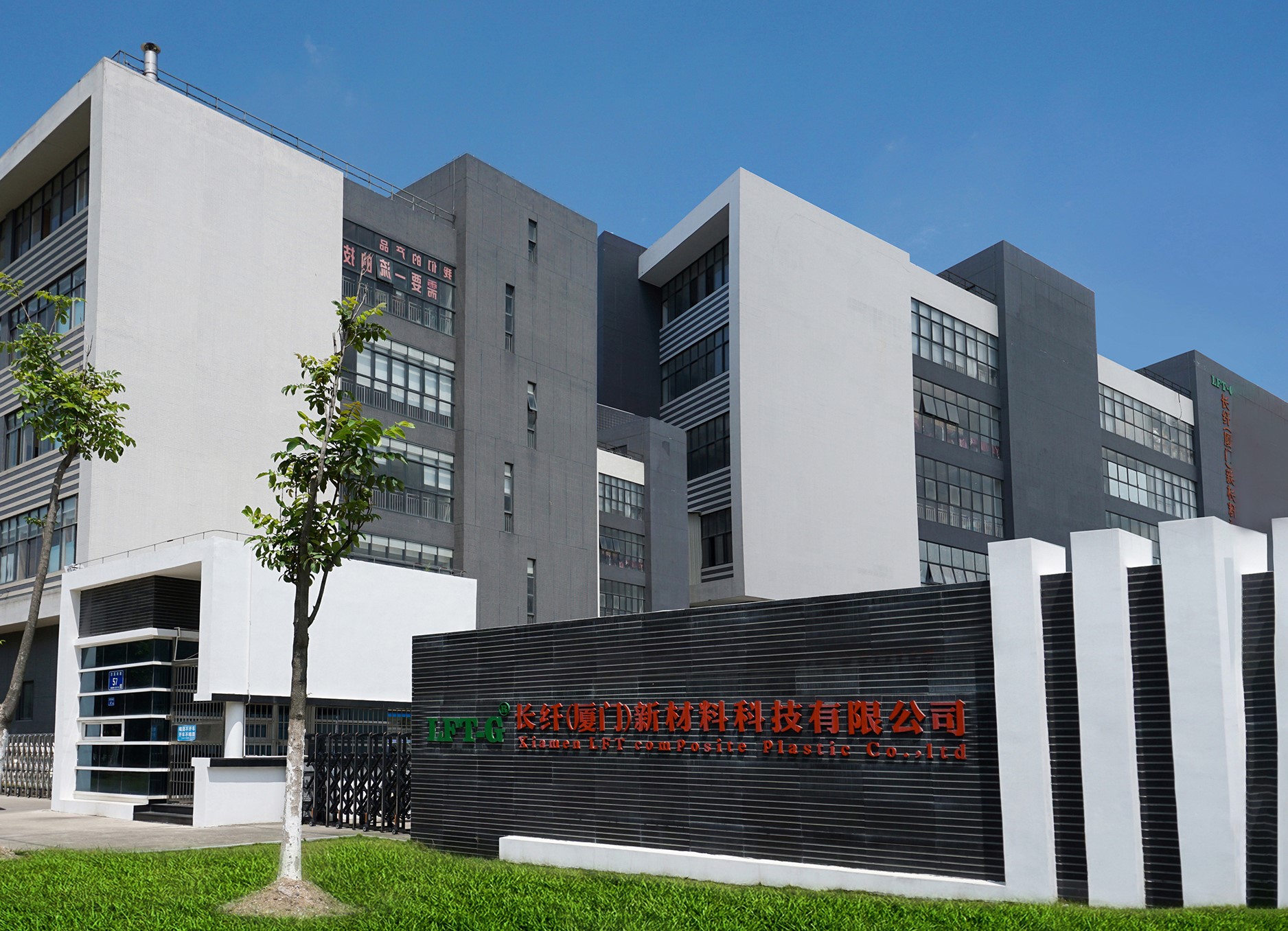novo blog
Princípio de modificação
Plásticos modificados referem-se a plásticos que são processados e modificados com base em plásticos gerais e plásticos de engenharia por meio de enchimento, mistura, reforço e outros métodos para melhorar as propriedades de retardador de chama, resistência, resistência ao impacto, tenacidade e outros aspectos. A modificação envolve a aditivação do plástico, o estado de dispersão do material de enchimento no plástico modificado e sua formação. O material de enchimento também tem grande influência na estrutura da interface da resina, assim como a adição de areia e cascalho ao concreto. A dispersão do material de enchimento é discutida abaixo.
Estado disperso
1. Quando partículas inorgânicas são adicionadas ao polímero fundido, pode haver três tipos de microestrutura de dispersão de partículas inorgânicas. â O segundo estado de agregação, este estado de dispersão tem um bom efeito de aprimoramento. (2) O estado de dispersão irregular, alguns reunidos em grupos, alguns existem na forma de dispersão individual. Esta dispersão não é melhorada nem endurecida. ⢠Disperso uniformemente na resina da matriz. Neste caso, existindo uma boa interface entre a partícula e a resina da matriz, haverá um certo efeito de fortalecimento e tenacidade. Para obter plásticos modificados com enchimento reforçado e temperado, espera-se que o terceiro estado de dispersão esteja disponível.

Processo de imersão, agitação e dispersão
2. Se o material de enchimento granular em pó inorgânico pode ser uniformemente disperso na resina da matriz individualmente está relacionado a uma variedade de fatores. No caso de condições fixas de processamento, a partir do efeito esperado da modificação do enchimento, quanto menor o tamanho das partículas inorgânicas, melhor. Mas quanto menor o tamanho, maior a energia superficial, mais forte a capacidade de autocoagulação e mais difícil de dispersar uniformemente. O efeito de "aglomeração" é formado pela energia superficial e pela eletricidade estática gerada sob a colisão e fricção do movimento em alta velocidade. Este tipo de condensado não pode mais ser aberto por força de cisalhamento mecânico no processamento subsequente de mistura e moldagem, apresentando o segundo estado de dispersão irregular como o mais relutante em ver a "mancha branca" em plásticos modificados.
Estado compactado
O pó granular é o estado de dispersão do material de enchimento cuja relação comprimento-diâmetro é de aproximadamente 1, e o material de enchimento com diâmetro relativamente grande refere-se ao material de enchimento fibroso curto, em forma de agulha e em folha fina. Os materiais fibrosos têm um bom efeito de endurecimento, mas a maioria dos materiais de enchimento fibrosos tem um preço alto e pouca proteção ambiental. A produção em massa de fibra de carbonato de cálcio (bigode) pode mudar esta situação, e o bigode de grande comprimento pode até reduzir a fibra de fabricação de papel para a indústria de papel.
Aplicativo modificado
Com desempenho de custo superior, os plásticos modificados têm sido aplicados cada vez mais em campos posteriores. Pode-se dizer que os plásticos modificados se tornaram uma tendência de consumo, e os cinco fatores a seguir estão implícitos por trás dessa tendência:
Alto desempenho: Os plásticos modificados não só apresentam as vantagens dos plásticos tradicionais, como baixa densidade e resistência à corrosão, mas também possuem boas propriedades físicas e mecânicas, como alta resistência, alta tenacidade, alta resistência ao impacto, resistência ao desgaste e resistência a terremotos. Além disso, a melhoria do desempenho abrangente dos plásticos fornece uma base para a sua ampla aplicação no campo a jusante.
Baixo custo: Comparado com outros materiais, os plásticos se beneficiam das vantagens de alta eficiência de produção e baixa densidade, além de terem um custo menor. O custo por unidade de volume do plástico é apenas cerca de um décimo do custo do metal.
Política governamental: a China implementou o sistema de certificação obrigatória "3C", que estipulou estritamente o desempenho de segurança dos produtos do catálogo, promovendo assim a ampla aplicação de plásticos retardadores de chama em eletrodomésticos, TI, comunicações e outros campos.
Atualização do consumo: com a melhoria dos padrões de vida, as pessoas começam a buscar um desempenho de produto mais excelente, exigindo que os eletrodomésticos e outros produtos sejam mais bonitos, seguros e duráveis, de modo a apresentar requisitos mais elevados para a indústria plástica a montante, exigindo que ela tenha melhor desempenho de processamento, propriedades mecânicas, durabilidade e segurança.
Fatores técnicos: mais de 1000 tipos de polímeros foram descobertos no mundo, mas apenas algumas dezenas têm valor de aplicação real. O desenvolvimento de novos polímeros não requer apenas grandes investimentos, mas também tem uma perspectiva de aplicação incerta. Pelo contrário, a tecnologia de modificação pode não apenas melhorar as propriedades dos polímeros existentes para atender às necessidades da indústria, mas também reduzir o custo de alguns plásticos de engenharia caros, tornando-se uma forma eficaz de desenvolver a indústria plástica.
Índice de dureza
A tendência de “substituir o aço pelo plástico” aparece em muitas indústrias, e a dureza é o seu principal indicador. A dureza refere-se à capacidade de um material resistir à pressão em sua superfície por outros objetos mais duros. Existem vários métodos comumente usados para indicar a dureza:
A. Dureza Shore
B. Dureza Rockwell
c, dureza de Mohs
Adicionar dureza de plásticos modificados refere-se a um método de modificação de adição de aditivos duros aos plásticos. O enchimento de dureza comumente usado é o enchimento inorgânico rígido e a fibra.
(1) Adicione enchimento inorgânico rígido
O tratamento de superfície melhora a dureza dos plásticos
O método de melhoria da dureza superficial do plástico refere-se à melhoria da dureza da superfície externa dos produtos plásticos, enquanto a dureza dos produtos internos permanece inalterada. Este é um método de melhoria de dureza de baixo custo.
Este método de modificação é usado principalmente para conchas, materiais decorativos, materiais ópticos e necessidades diárias. Este método de modificação inclui principalmente revestimento, revestimento e tratamento de superfície.
(2) A mistura melhora a dureza dos plásticos
O método aprimorado de mistura de plástico é misturar resina de alta dureza em resina de baixa dureza â»â» para melhorar sua dureza geral. As misturas comuns são PS, PMMA, ABS e MF, etc., e as resinas que precisam ser modificadas são principalmente PE, PA, PTFE e PP.
(3) a dureza dos plásticos melhorados compostos
O método para melhorar a dureza do compósito plástico é compor uma camada de resina de dureza na superfície de produtos plásticos de baixa dureza. Este método é adequado principalmente para produtos extrudados, como chapas, folhas, filmes e tubos. As resinas compostas comumente usadas são PS, PMMA, ABS e MF.

Xiamen LFT plástico composto Co., Ltd.é uma empresa de marca com foco em LFT e LFRT. Série Longa de Fibra de Vidro (LGF) e Série Longa de Fibra de Carbono (LCF). O LFT termoplástico da empresa pode ser usado para moldagem por injeção e extrusão LFT-G, e também pode ser usado para moldagem LFT-D. Pode ser produzido de acordo com as necessidades do cliente: 5 ~ 25 mm de comprimento. Os termoplásticos reforçados com infiltração contínua de fibra longa da empresa passaram pela certificação do sistema ISO9001 e 16949, e os produtos obtiveram muitas marcas e patentes nacionais.